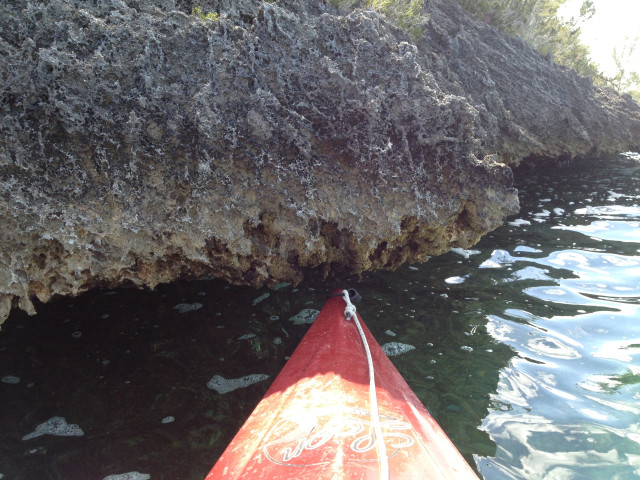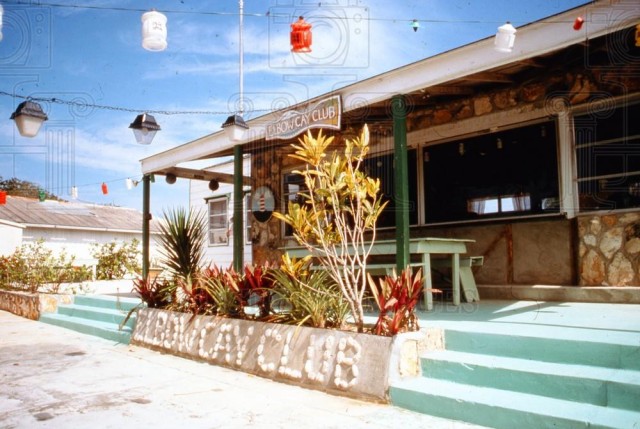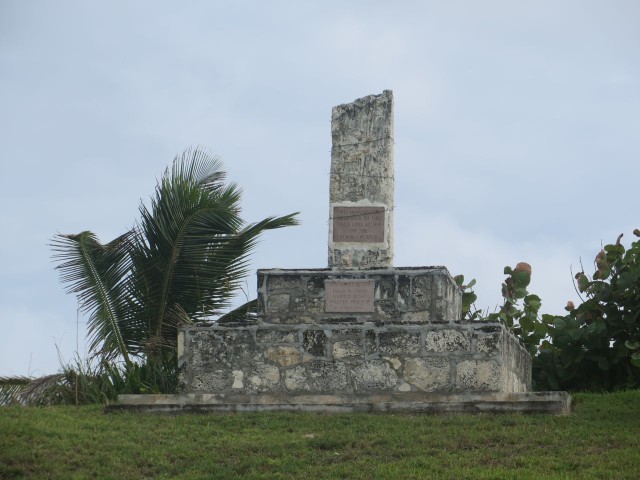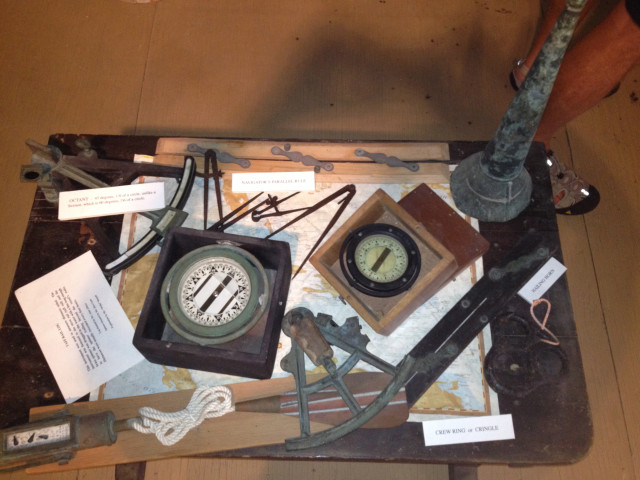I had a few photos that have not made it into a post for lack of a “theme;” some were pictures of things that were intriguing or from a day that didn’t really fit with anything else. Or I just never got around to it. Today, after two months in Hope Town, we visited the Wyannie Malone Museum, and it occurred to me that I could gather a few things together for a single post, about things from the past. I do not want to make this a history lesson, but only want to share a few images that represent a time, a place, or people that are no longer here.
It begins with a little kayaking excursion we took earlier this week. We brought our kayaks with us and have finally had time to use them here. We have also shared them with other cruisers we have met – it is nice to see them be used and enjoyed. This time we left the harbor and headed south along the western shore of Elbow Cay.

We passed Frye’s Mangrove and came upon a place we had spied from our dinghy and from the big boat when passing on our way south. We had been told it was an abandoned resort. Seemed like a good place to stop for a little rest.
From what I can tell through a little googling, this opened as “New Hope” in 1954 as an alcoholic rehabilitation center, and later became “Elbow Cay Club Resort”, operating as a typical out island inn in the 1970’s. It is now abandoned and has fallen into neglected state. We were curious and took a look around. It was a curious place to stumble upon – almost like a scene from the old tv series “Lost.” Well, maybe not quite that. I have an overactive imagination.

Lower left – a female sculpture in the ground
Upper Right – the resort’s name formed in shells and overgrown
Lower Right – outdoor dining area

Engraved in the concrete to the right of the words “Elbow Cay Club” was the date – we think it was October 20, 1978, followed by names.
Back in 2009, this property caused a stir and a division among the population of Elbow Cay. A South Carolina development company put it under contract for development as a new resort and marina. “A groundswell of local opposition rose, creating much ill feeling in this small, close-knit community.” Hope Town Becomes a Battleground Over Out Island Development. Most of the objection was to the scope and scale of the project – homesites, townhouses, a hotel/conference centre, six staff apartments, and a large marina. Obviously, that never happened. We have heard that Haitian immigrants have moved into the buildings as squatters.
On our walks around Hope Town we have come across markers of the past, memorials and cemeteries. One of our favorite places to sit and look out over the ocean is the Memorial Garden (photos in The Rainbow Before the Rains post.)
In the 1850’s, the tiny community of Hope Town was exposed to the Cholera epidemic. This highly contagious and incurable disease spread rapidly through the community resulting in one hundred lives being lost.

The Settlement Cemetery sits high above the ocean at the other end of Hope Town, with incredible views of the sea. We stopped there one day and quietly pondered the names and lives of the people named; Malone, Lowe, Sweeting, Albury.


The Wyannie Malone Historical Museum was definitely worth the visit. For more detail than I will provide here, just use the link (blue highlight.)
The museum traces Hope Town’s history from the Lucayan Indians to the British Loyalists who settled here after the American Revolution. The building itself is a typical home form that time period.




Let’s end this post with the wall art display created by visiting artist, Teleri Jones, as a gift to the museum, and made from shells donated by people from the community of Hope Town.














Leave a Reply